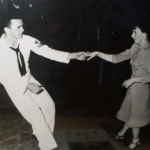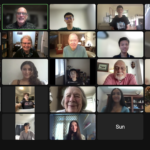Mae Krier was born March 21, 1926 in North Dakota, and she grew up in the rural community of Dawson in that state. She recalls that the times were tough: the 1930s was the Depression era, and for the people of Dawson that meant the dust storms and unemployment. Mae’s father was able to find work in the town’s grain elevator, and that was enough to keep food on the table. Mae went to school, where she recalls a minimal education. She was 15 when the Japanese attacked Pearl Harbor, and in short order she saw the young men of her town leave, and not long after that young women left too, as the call went out for “Rosie the Riveter”. Mae went to Seattle with her sister and a friend, and they found work in the massive Boeing factory. Mae stayed out there for the duration of the war, doing her bit. She was involved in the production of B-17s, the “Flying Fortress” bombers which helped to deliver victory to the Allied forces. Mae learned the essential industrial basics – riveting and bucking – and she also dealt with some of the indignities of the time – lower pay and sexist behavior from some of the male employees. She also had a good time when she was not working, often dancing with her friends. She met her husband during this time too, and the two of them began jitterbugging, the start of a lifetime of dancing. He was initially stationed at Camp Pasco in Washington, but they eventually moved back east, beginning their civilian life together and making their mark in postwar America. Mae became politically active in her retirement, working tirelessly to have all the Rosie’s remembered and commemorated, and she succeeded in bringing a congressional gold medal to that cause.
Videos
Click next video below to keep watching



